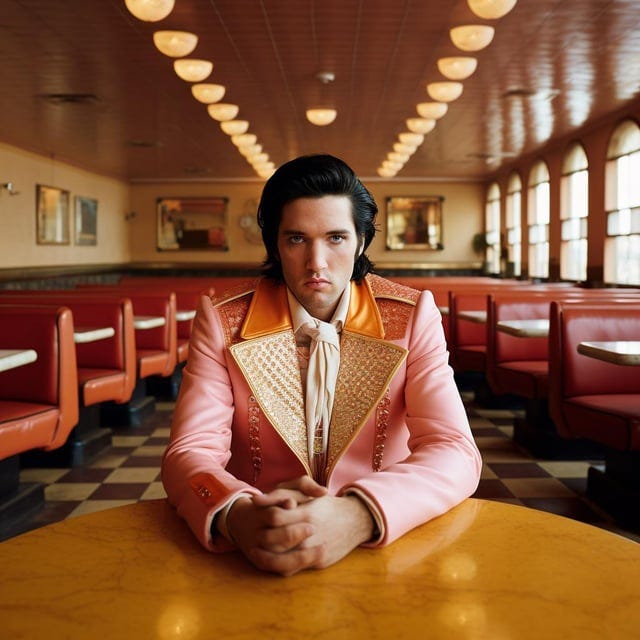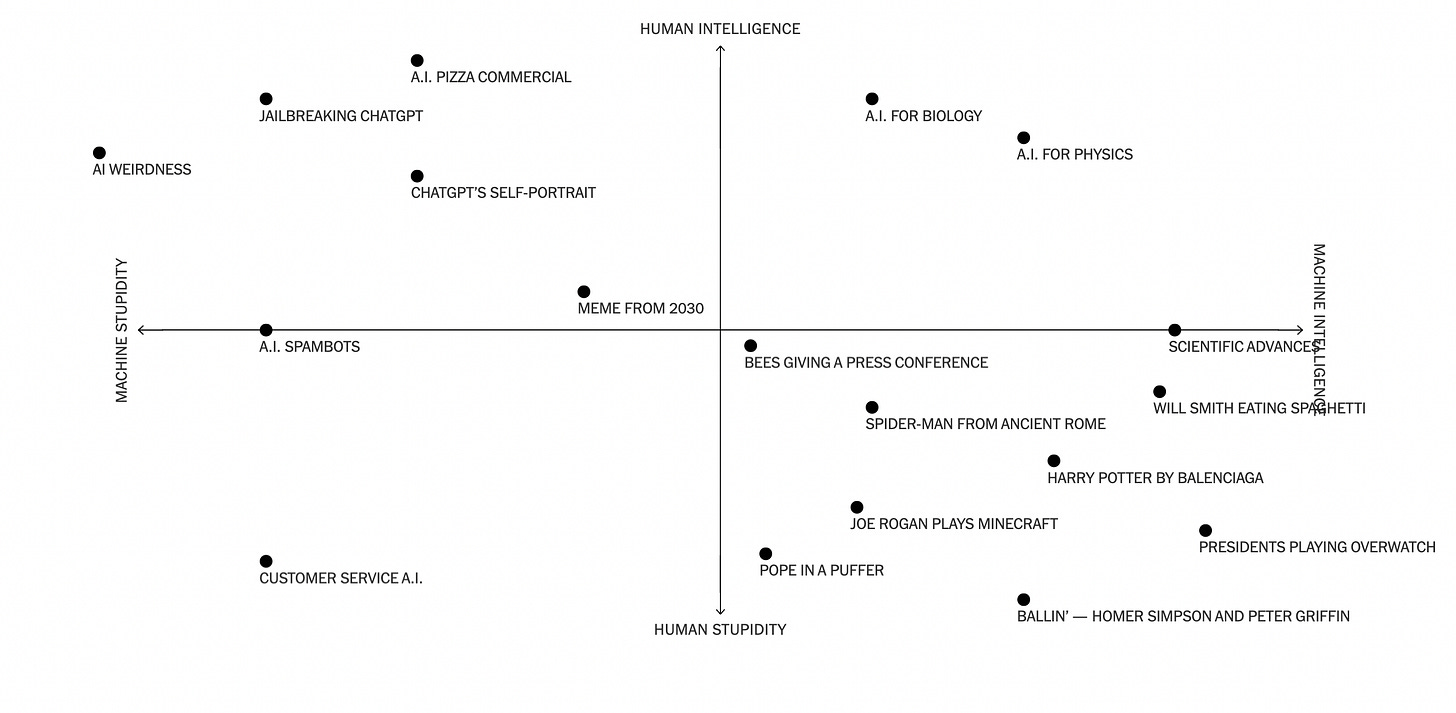I just revisited Miami Vice, Michael Mann’s mid-aughts update of the 1980s TV show. It’s moody, dark, not the sun-drenched sinful pastel city that the original 1980s TV show made famous. When it came out, it was trashed, but more recent reviews of it have lauded something that I didn’t initially clock the first time I saw it.
It was shot on video, a medium that was still new, slated to forever change the film industry. Michael Mann told New York Magazine critic Bilge Eberi: “If I’m going to use video, I want to find an aesthetic that derives from that technology. I’m not interested in making it look like film.”
Every technological transformation changes aesthetics. As we get our hands on new tools, our world changes visually. Photography both developed its own aesthetic, and helped free painting from its fidelity to reality. Photoshop introduced a new world of gradients and composite.
New technology drives new aesthetics, but time will tell how we remember it. The advent of computer graphics created an 8-bit aesthetic that cues both nostalgia and computers today. Who knew that the 8-bit blockiness of early gaming would become an aesthetic that climbed its way into 21st century art and fashion?
Is There an AI Aesthetic?
We’re already seeing the growth of an aesthetic in relation to AI: the strange morphing of one thing into another, the extra fingers, the slightly horrific faces. As much of the industry seeks to polish the edges and reach more perfection, models will continue to evolve and become more expert in replicating an existing aesthetic.
But a new aesthetic has already been growing through the cracks.
Wild combinations. Early experiments with generative art was an exploration of strange mash-ups, often centering on pop culture x the unexpected/implausible/impossible, like this Homer Simpson x Basquiat, or the below pun of the Titanic with iceberg lettuce.

Homer Simpson in the style of Basquiat, by Moss + Fog 
The Titanic hitting iceberg lettuce, by Reddit user Hyperion_04 
If Wes Anderson made an Elvis movie, by Reddit user skinnypantsmcgee The morphing faces, many fingers, and other anomalies AI introduces to our physical form.

Letters and writing. Ask an AI image generator to write your name and it will come back to you with some visually interesting gobbledeegook.
As creators seek to make work that’s less of an experiment and more a reflection of their vision, there’s a certain level of uncanny polish. Is it the light? An element of painterliness in what looks like a photo? When it’s not clear from the subject matter or the ‘mistakes', there’s still a hint of an AI-generated aesthetic.

A girl by Reddit user Grufel3333

The Creative Journey to a New Aesthetic
These are all part of early experiments—both on the human side and the machine side.
Borrowing from Max Read’s Human Stupidity / Machine Intelligence model, I want to unpack this for the creative journey. Rather than stupidity, there’s something else driving the creative exploration and feeding those of us new to the thing to push the limit of possibility. The joy of random interaction, the going through the ridiculous to seed the chaotic, and maybe, eventually, find the sublime.

I’ll call it inanity.
Human Inanity / Machine Inanity: Still testing the aesthetic limits, but also where the system devolves. Chaos, really. This is the vein where chaos agents rejoice, and it is what AI skeptics point to as an example of the shortfalls of machines. However it’s also the space of experimentation, where new things are tested, adopted, discarded, and built into our lexicon. Not just by the person executing, but also by the machine, who’s learning by what gets repeated.
Human Intelligence / Machine Inanity: This is the space of six-fingered beings, dolphin/human hybrids, strange visions and combinations that fall outside of our imagination. This is where the potential lies to push our aesthetic into the surreal or absurd.
Human Inanity / Machine Intelligence: The machine gets more intelligent, learning what people are looking for and adjusting accordingly.
Human Intelligence / Machine Intelligence: Here we seek to build fidelity and make the machine obey our very command. This is the holy grail for people like advertisers, who want the machine to be reflective of a vision. It’s where we gain a sense of mastery, where prompt engineers earn their ever-growing keep, and where we get the illusion of control over this tool.
In January, BuzzFeed dissected the problem of AI and fingers; the solution? More better data. In March, Midjourney released an update that brought realistic hands into reach.
As we accelerate towards more polish and accuracy, and more control over the visual output, I’m curious if some of the early elements will become markers of a certain visual era or will be erased by history.
You’ve just read Framing, a regular newsletter about what’s good culture, marketing, and business by Anita Schillhorn van Veen.
I’m Director of Strategy at McKinney, on the advisory board of Ladies Who Strategize, and a writer over at my other favorite Substack Why Is This Interesting.
If you haven’t yet subscribed, please consider being a paid or free subscriber.






